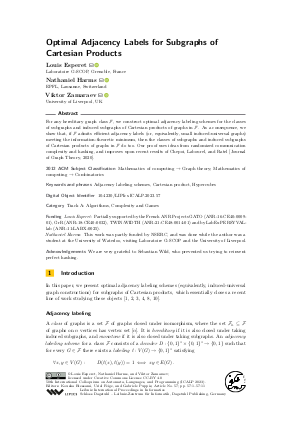LIPIcs.ICALP.2023.57.pdf
- Filesize: 0.66 MB
- 11 pages

 Creative Commons Attribution 4.0 International license
Creative Commons Attribution 4.0 International license


















Feedback for Dagstuhl Publishing